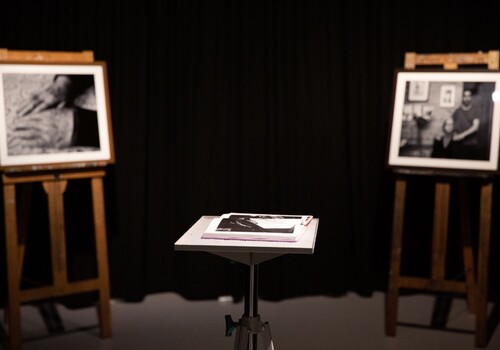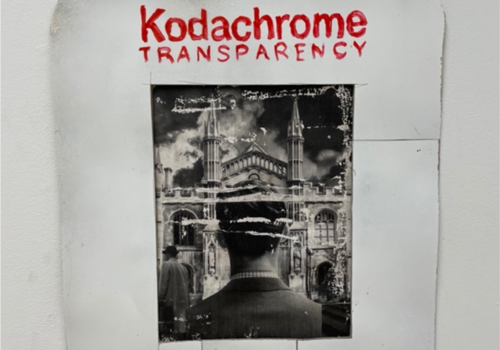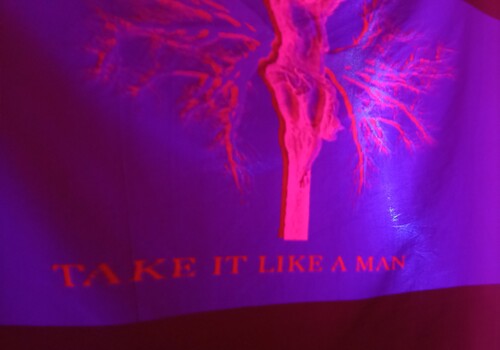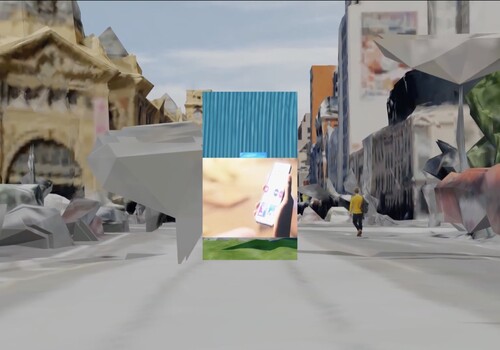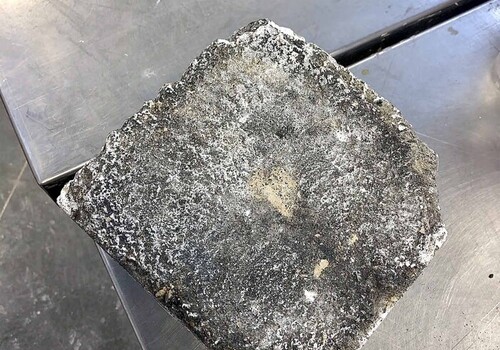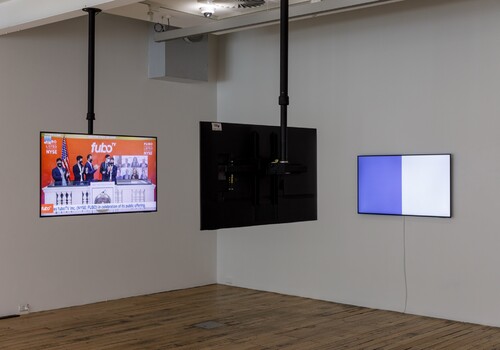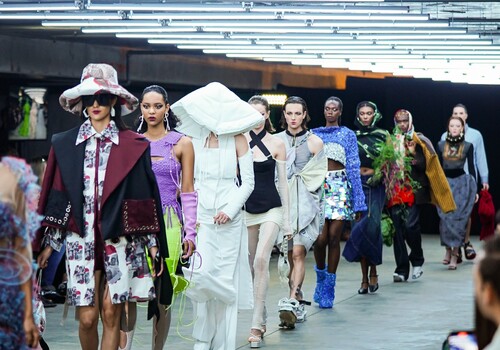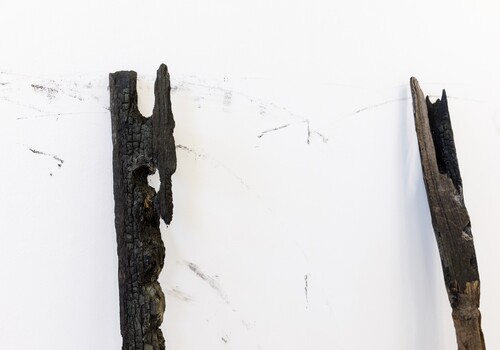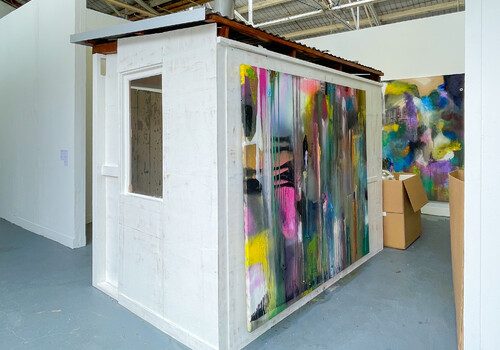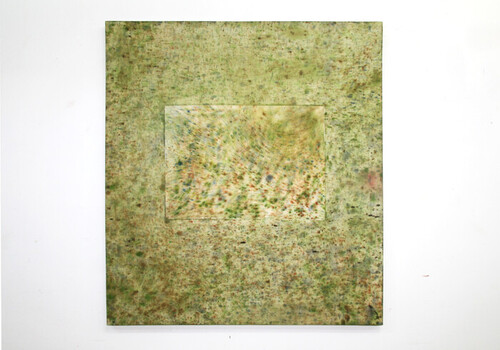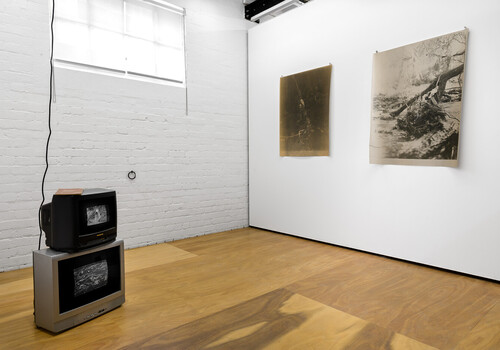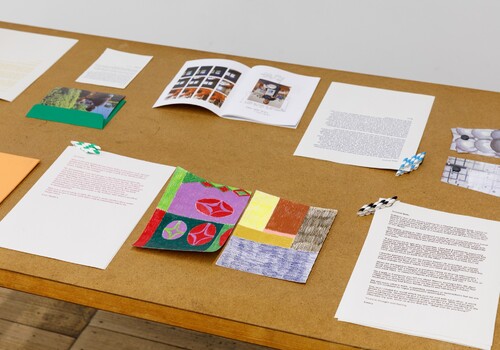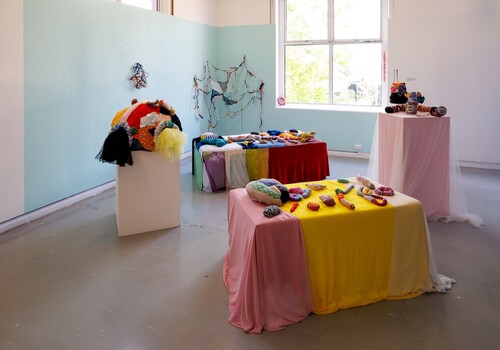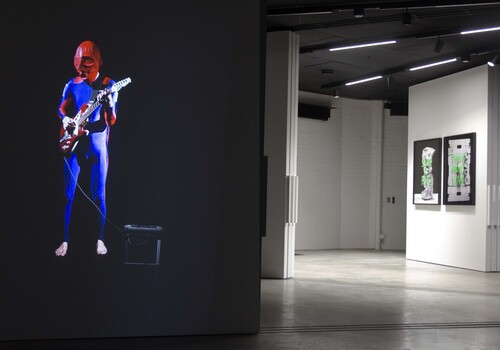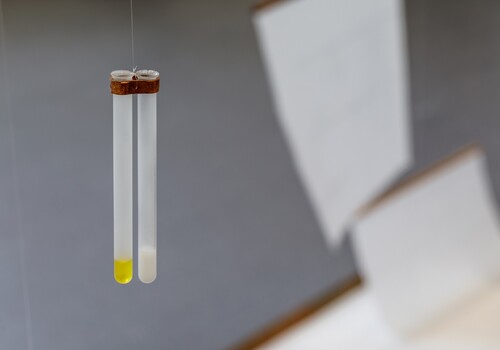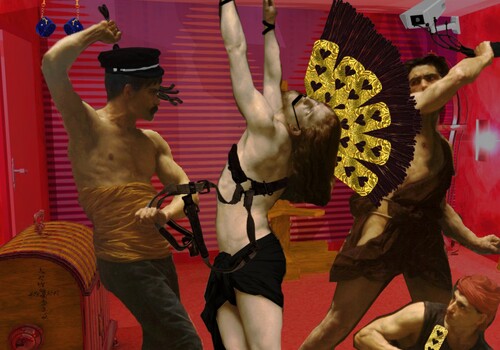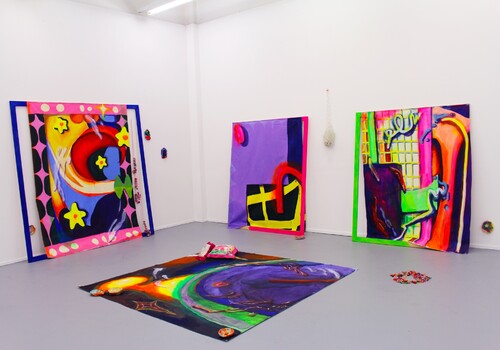Bachelor of Fine Art, RMIT
By Georgia Elizabeth Milford
The RMIT campus is bustling with the sounds of construction. It is a metropolis that echoes the busy-ness of the surrounding city and the whispering of subconscious memories of familiarity with materials. Loud sounds, bold vibrations the hums of the outer world: these underlying sounds and their patterns and textures provide a resonance with the importance of materiality in the RMIT graduates’ work.
In contrast to the consistently bustling nature of RMIT campus, Johanna van Der Linden’s installation provides the viewer with a space of silence. The piece Growing up my mother swept the floors of our Church, then our kitchen: Imprint, absence and the un-sacred object shows a hanging partition in the middle of the room made of a series of layered paints and papers, as if in the darkened nave of a classical church. The walls themselves offer the memory of a place of worship, emphasised through the exposed brick walls of the institution contrasted with long tapestries covering walls, echoing a space of worship. A glass window shimmers in the background, creating a whimsical backdrop to light and frame the stained fabric. The closeness of the brick walls and artworks reinforces a textural abundance within the work, invoking the idea of construction, overlapping into the subconscious of the artist within their installations. Textures and physical imprints make the respective artworks feel as though it is the inside workings of the mind.
Daniel Song’s work Artifacts of observations gives the audience respite within the sound of the subconscious. Soft colours and pages of books, scattered and captured within PVA glue, are solidified in long sheets that show refracted light and movement. Precariously hung, the small series is a collection of thoughts, colours and literary ideas. These are captured and stuck into the ubiquitous ecosystem of a desk. A stillness and a soft physicality are laced with PVA glue, which suddenly feels nostalgic. The sheets of glue are semi-transparent and float in-front of the harsh angles of the buildings outside. Displayed both horizontally and vertically, the pieces present themselves as a collection of archaeological writings aged by years of sun-damage or coffee stains. Rips, uneven edges and warped words trapped in PVA seem to trap memory itself, gluing the artist’s actions down, while the material of PVA is physical reminder of the connection between memory, materiality art practice.
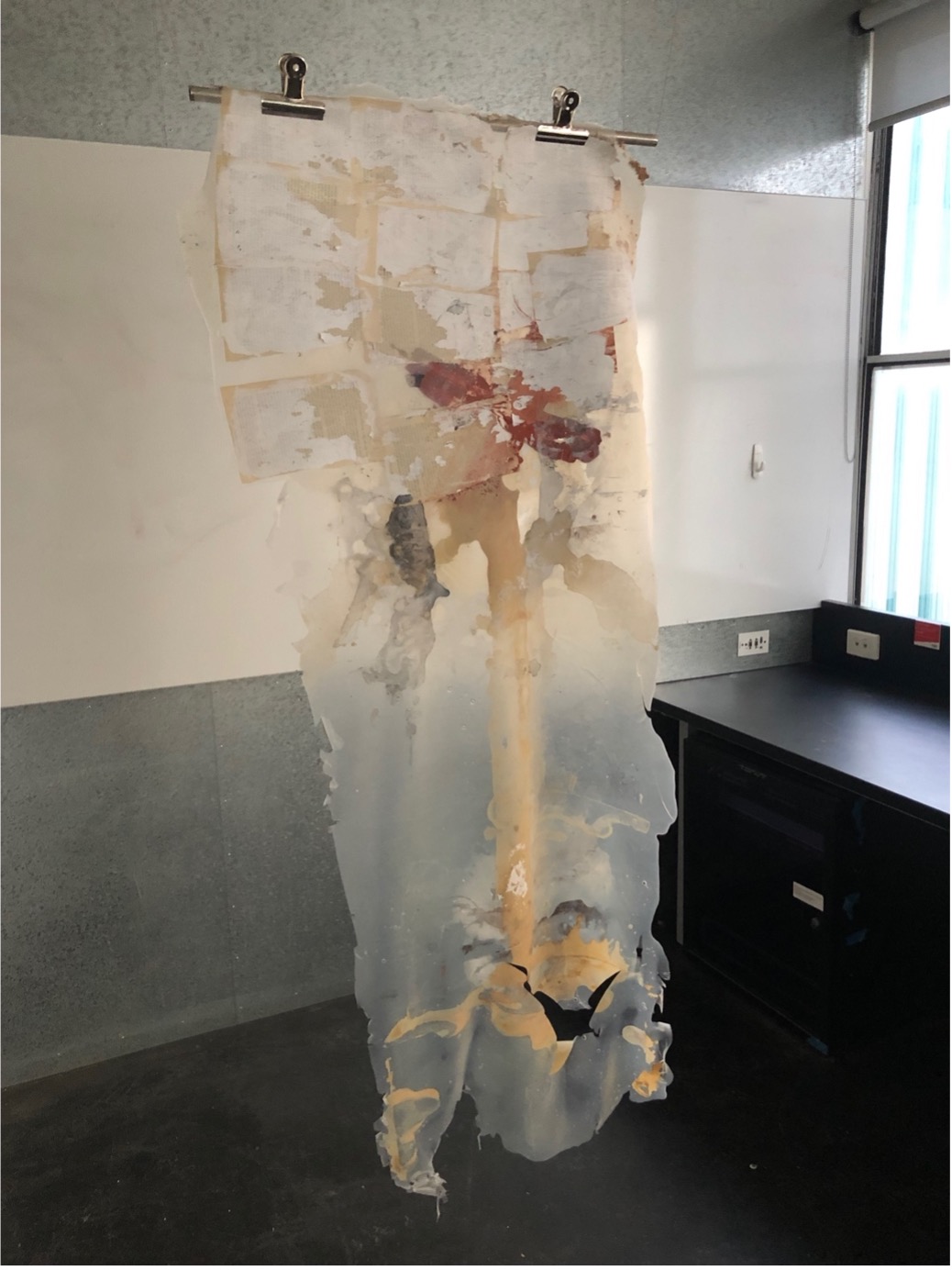
Brigid Meredith’s I saw it morph behind my eyes is also a display and exploration of the action of physical indexes within the space. Delicate collections and intentional formulations of warm browns and cool greys illustrate the structures of a cloud, abstracted and limitless yet trapped within the lines of the horizon. Most striking is the tracing paper and oil paint floating delicately in front of a stained-glass window. Through the connection between the interplay of light and the thinness of the paper, the colouring of the stained glass sustains an impression—or an impression of an impression—onto the paper. This interplay of light and silhouettes created by the richness of oil paint gives a sense of stillness as the mind wanders within the space.
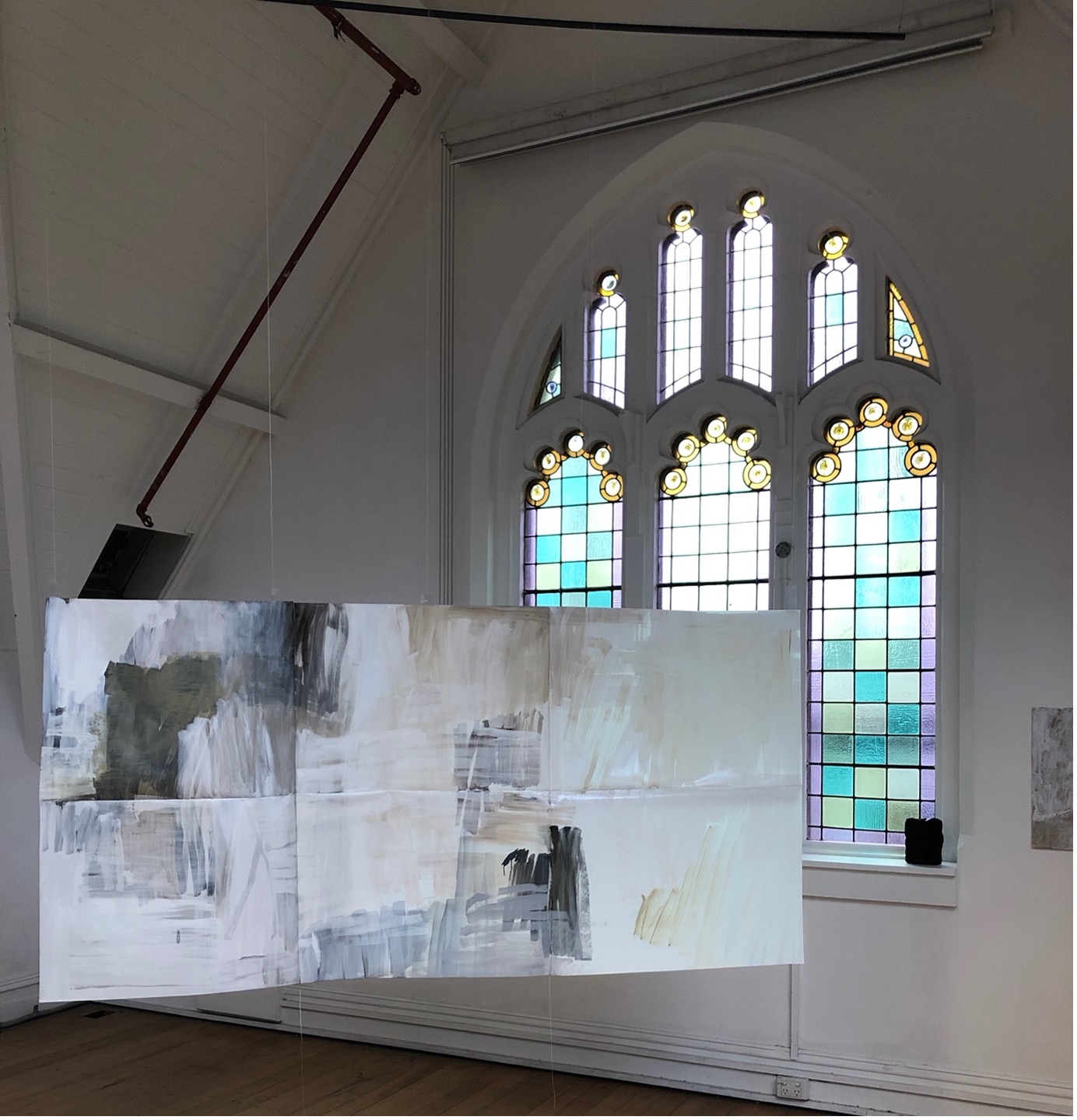
Manipulated by the constrictions of studios and the commonplace box of Zoom meetings, it feels that these pieces overflow with the intimate connection to textures and memories. Both Song’s and Meredith’s work is a collection of material impressions that were made almost subconsciously. The act of collecting materials in these installations sustains and echoes the sounds and memory of the city as a subconscious mind. Der Linden’s installation illustrates a similar exploration in the collective mass of materiality and impression of memory. The different collections of different materials—and the sound impressions made by these respective artists—maintain a sacred connection to space and memory. The connection of auditory semblances within the physical installations acts as a reminder of the importance of surroundings in art practice. The consistency of city construction echoing through RMIT, the works produce a beautiful family resemblance between all the artists in the show.
Georgia is a writer/aspiring art historian student studying Art History and Curation at Monash University.
